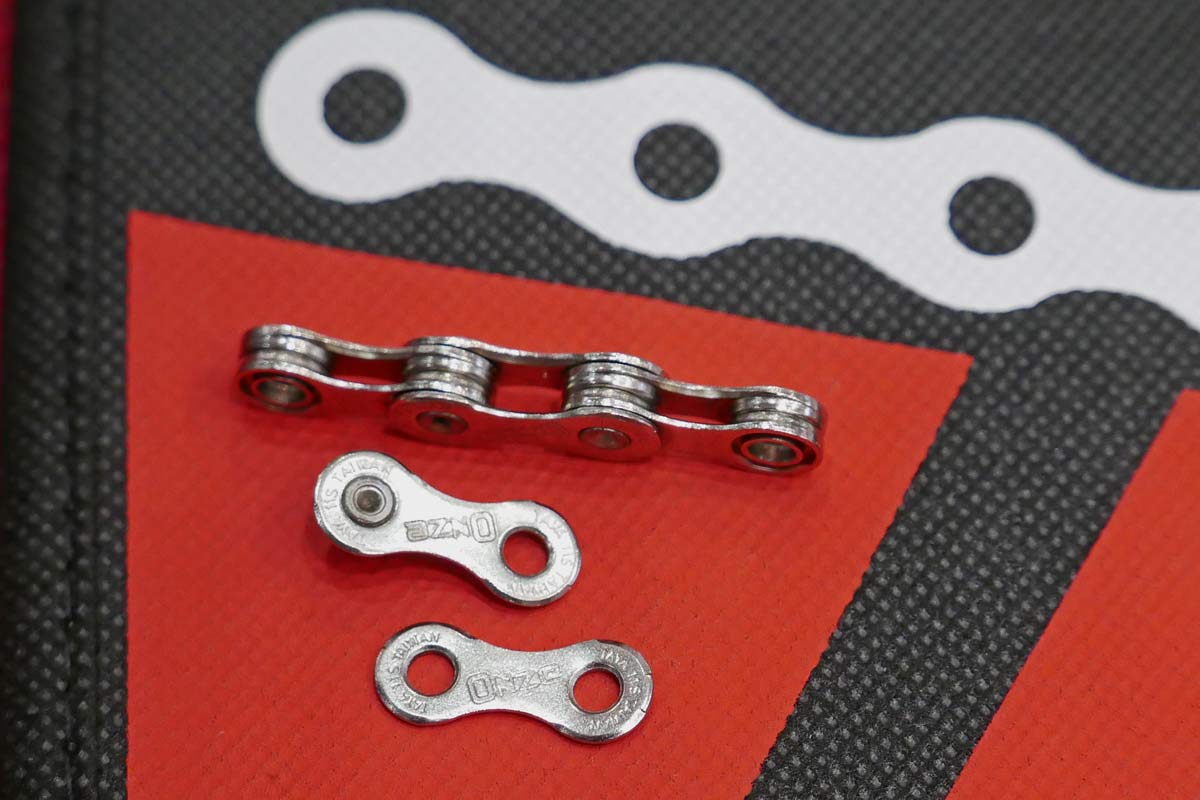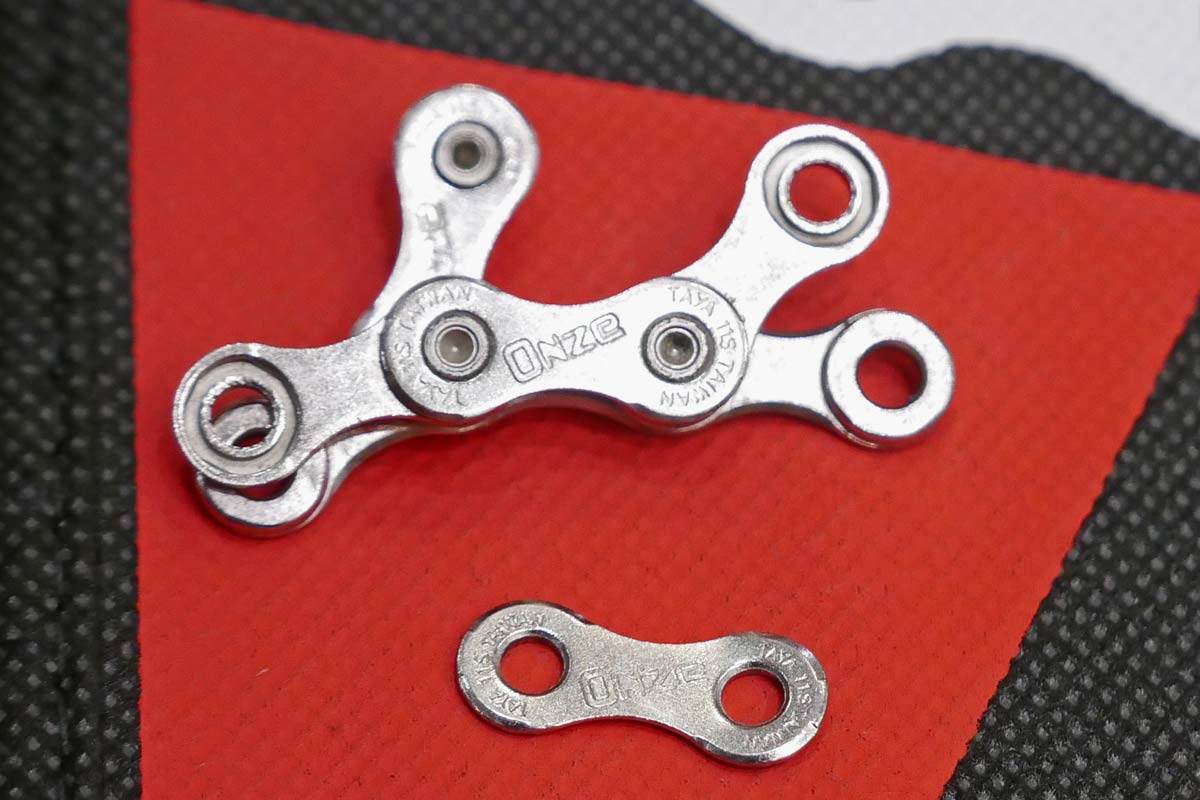Pretty much every bike chain I have ever used is made up of four parts: outer plates, inner plates, pins that connect everything together, and rollers that actually contact the chainring & rear cogs. Well, Taya’s latest 11 speed EVO-Light bike chain just cut one of those components out of the equation, promising lighter weight and improved shifting precision.
Taya Onze EVO-Light 11-speed roller-less bike chain
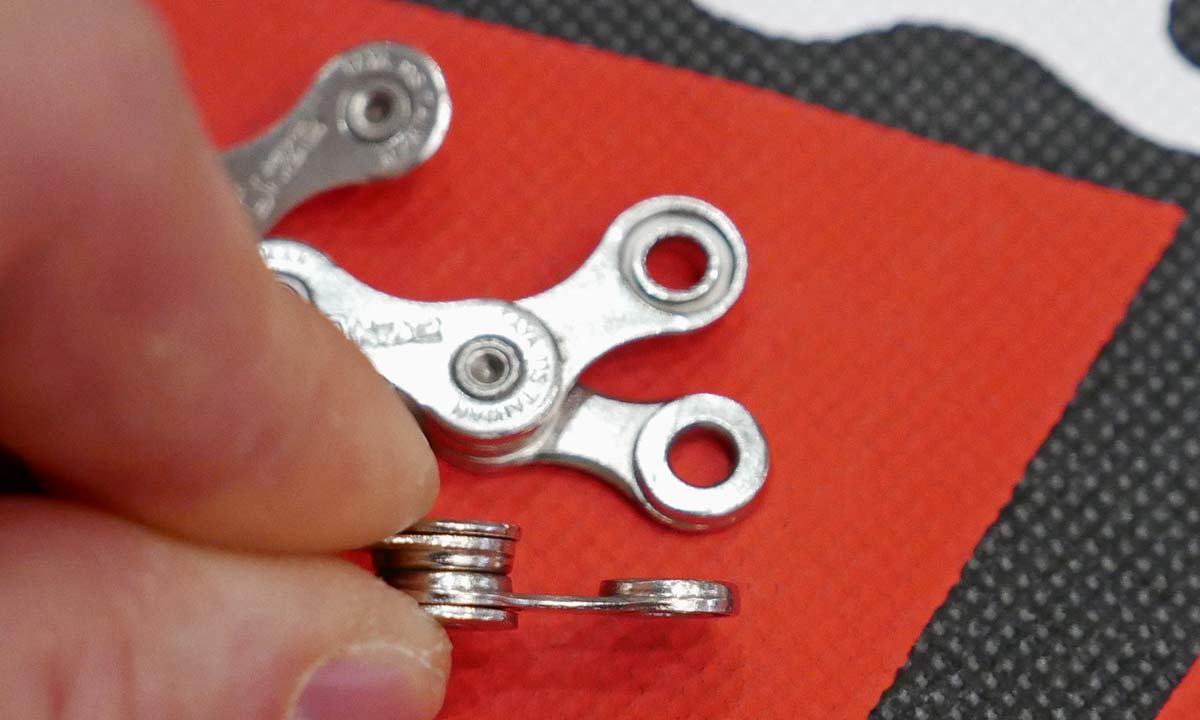 The bike chain hasn’t effectively changed much in recent memory, besides reshaping the outer plates and maybe hollowing out plates & pins to shed a few grams. Now, after 50 years of producing bike chains, the fact that Taya’s new Onze EVO-Light chain completely eliminates one of four basic components is pretty impressive.
The bike chain hasn’t effectively changed much in recent memory, besides reshaping the outer plates and maybe hollowing out plates & pins to shed a few grams. Now, after 50 years of producing bike chains, the fact that Taya’s new Onze EVO-Light chain completely eliminates one of four basic components is pretty impressive.
Our first question was, why try to eliminate the chain roller in the first place? Taya’s idea to eliminate the separate roller was at once to simplify chain construction, making it run more quietly, but also to remove one of the key wear items from a chain. Eliminating any element meant they could shed weight and have one less part to assemble at each link. Plus, as an extra separately moving part, when rollers wear they have a negative effect on shifting performance, and contribute to further drivetrain wear.
Eliminating the separate roller is also said to help keep contaminants out of the rolling portion of the chain, which should lead to even longer chain life. And Taya says that the channel pressed into the outer side of the inner chain plate while forming the integrated roller will also better hold chain lubricant, while not attracting dirt & grime as much. If those claims hold true out in the real world, color us impressed.
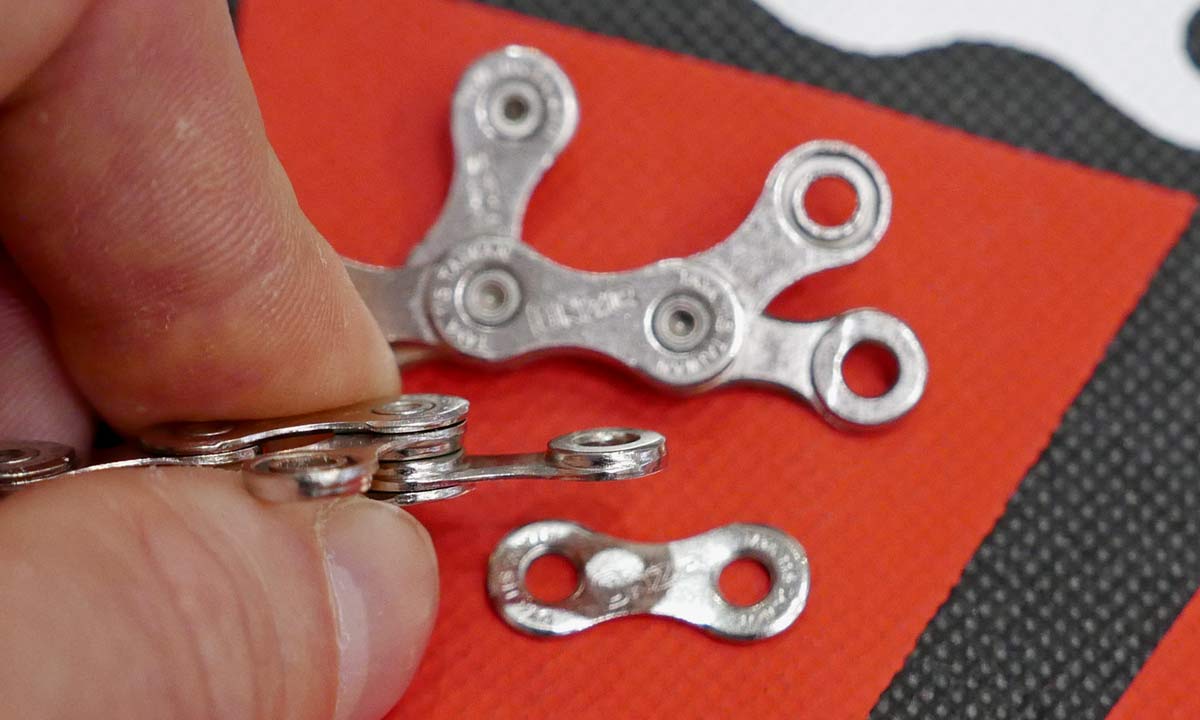 So then, how do you eliminate the roller? The roller is the actual contact point between the chain and the drivetrain components on your bike, so Taya had to find a new design to transfer power from the chainring to the cogs in the cassette. To do that, they developed a new inner plate forging process that presses half of the new roller profile into each end of their inner chain plate.
So then, how do you eliminate the roller? The roller is the actual contact point between the chain and the drivetrain components on your bike, so Taya had to find a new design to transfer power from the chainring to the cogs in the cassette. To do that, they developed a new inner plate forging process that presses half of the new roller profile into each end of their inner chain plate.
Technically, then, the chain roller isn’t totally gone, it just becomes split in half and integrated into the new inner plates. Then when Taya pins the chain together with a conventional riveted pin, you end up with a chain that doesn’t look much different from a conventional chains, except for a seam through the middle of the new roller design.
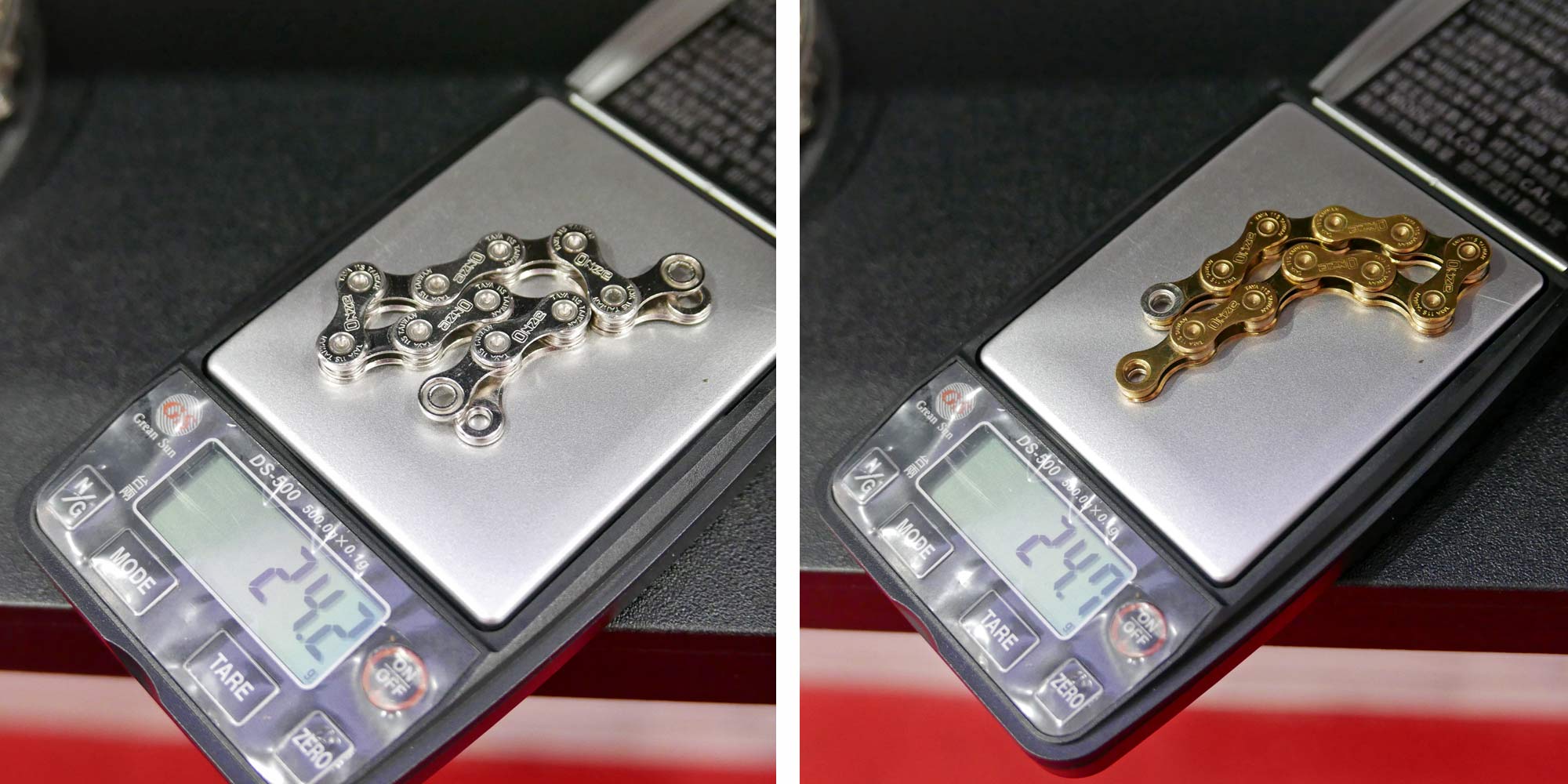 Taya claims that eliminating the separate roller can save up to 10% on the overall weight of a chain, without any other technology upgrades. Looking at a five and a half link segment of the new Onze EVO-Light 11 chain vs. a standard Onze 11 chain shows a real savings of just 2% in this example. Not a giant savings, but we’ll take any real weight savings, especially when it’s potentially improving durability and shift performance.
Taya claims that eliminating the separate roller can save up to 10% on the overall weight of a chain, without any other technology upgrades. Looking at a five and a half link segment of the new Onze EVO-Light 11 chain vs. a standard Onze 11 chain shows a real savings of just 2% in this example. Not a giant savings, but we’ll take any real weight savings, especially when it’s potentially improving durability and shift performance.
Taya says they’ve started producing the new Onze EVO-Light chain in a 11-speed version as that is the most common drivetrain configuration at the moment. The new chain will first be available in an all-silver version with other colors & surface treatments to follow (likely followed by a 12-speed model). The chain uses a standard 11-speed quick-link, and while Taya includes a Sigma+ one with the chain, any quick-link will work.
